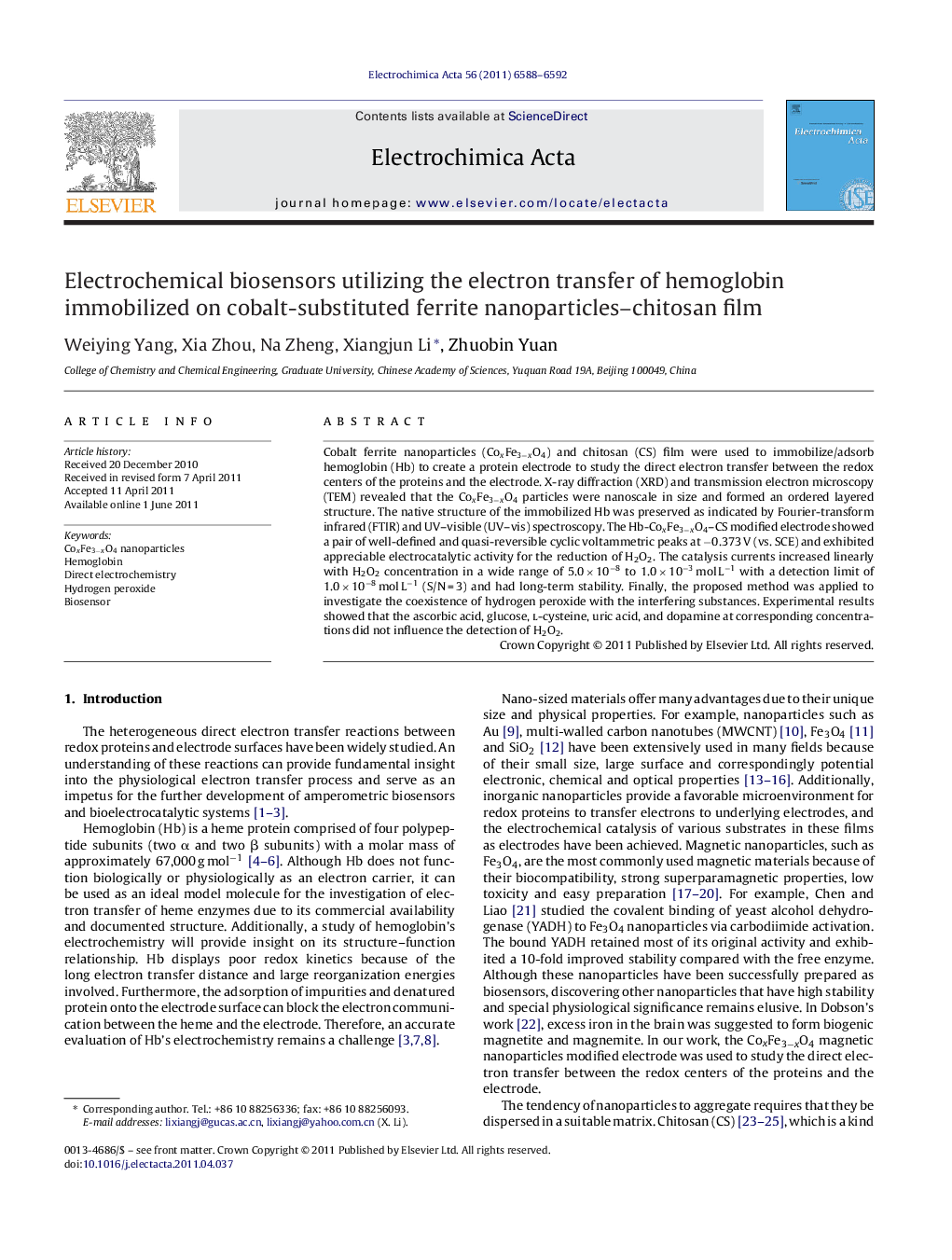| Article ID | Journal | Published Year | Pages | File Type |
|---|---|---|---|---|
| 189531 | Electrochimica Acta | 2011 | 5 Pages |
Cobalt ferrite nanoparticles (CoxFe3−xO4) and chitosan (CS) film were used to immobilize/adsorb hemoglobin (Hb) to create a protein electrode to study the direct electron transfer between the redox centers of the proteins and the electrode. X-ray diffraction (XRD) and transmission electron microscopy (TEM) revealed that the CoxFe3−xO4 particles were nanoscale in size and formed an ordered layered structure. The native structure of the immobilized Hb was preserved as indicated by Fourier-transform infrared (FTIR) and UV–visible (UV–vis) spectroscopy. The Hb-CoxFe3−xO4–CS modified electrode showed a pair of well-defined and quasi-reversible cyclic voltammetric peaks at −0.373 V (vs. SCE) and exhibited appreciable electrocatalytic activity for the reduction of H2O2. The catalysis currents increased linearly with H2O2 concentration in a wide range of 5.0 × 10−8 to 1.0 × 10−3 mol L−1 with a detection limit of 1.0 × 10−8 mol L−1 (S/N = 3) and had long-term stability. Finally, the proposed method was applied to investigate the coexistence of hydrogen peroxide with the interfering substances. Experimental results showed that the ascorbic acid, glucose, l-cysteine, uric acid, and dopamine at corresponding concentrations did not influence the detection of H2O2.
